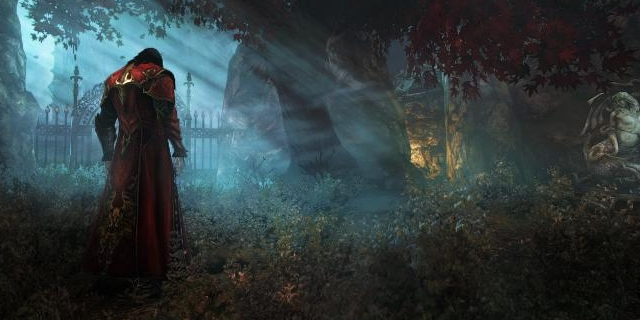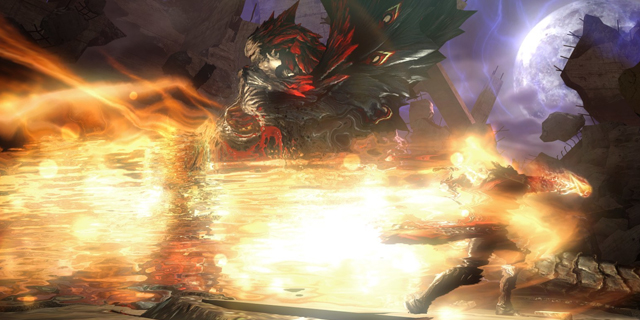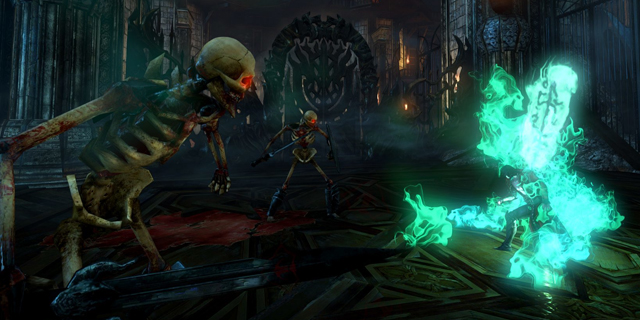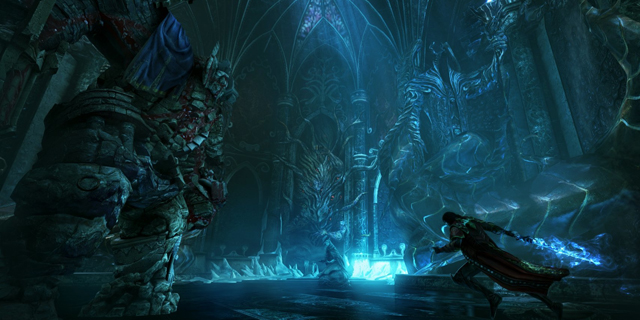
The original Castlevania: Lords of Shadow was a reinvention of the Castlevania formula and story, focusing on the very first Belmont, Gabriel, and his quest to resurrect his wife. It was a surprisingly fantastic game, managing to evolve the Castlevania series in a compelling way while also telling a worthwhile story. Lords of Shadow 2 sets out to complete Gabriel’s story and expand the original game’s formula, and does so with impressive results.
The original’s final moments left many Castlevania fans wanting to see where developer MercurySteam would take the series next, especially considering you would now be in control of the series’ big-bad, Dracula. The story picks up shortly after the events of Lords of Shadow, with Gabriel, now Dracula, attempting to defeat the acolytes of Satan to prevent his resurrection. While this is happening, there are frequent moments that bring us into Gabriel’s mind as he battles his inner-demons (literally) and slowly regains his powers after being dormant for thousands of years. The story isn’t as exciting as the first game’s, yet it manages to portray Gabriel as sympathetic despite also being a manifestation of evil.
Gabriel’s personal struggle mixed with his present-day battles against Satan’s various minions is often compelling, even if the jump between present and past distorts the narrative at times. There are excellent moments scattered throughout the game’s story, sure, the path to those moments can be uneven and sometimes leave you scratching your head. Having said that, I appreciated the attempt to delve into Gabriel’s troubled past while also maintaining his current struggles. It doesn’t always succeed, but when it does, it fleshes out the character in some remarkable ways.

Combat is still the core of the Lords of Shadow experience. Since you are no longer a mere mortal, the approach to combat is different despite some similarities. You still have your basic weapon, a whip, but your light and dark magic from the original game have been replaced with two new weapons. There’s the Void Sword, an icy blade that recovers your health with every blow you land on an enemy, and the Chaos Claws, which provide heavy, short-range attacks that can destroy shields and break an enemy’s defense. This is a nice change of pace from the original, with each weapon feeling distinctly different from each other and quick and satisfying swaps between each during combat.
The basic combat feels similar to the first game, which wasn’t unlike the God of War series, but it remains just as gratifying. You can mash buttons early on, leading you to some easy victories, but once the enemies get tougher and more varied, you’ll be required to make clever use of your two other weapons. They both run on limited energy, making sure you use them efficiently. In order to regain that energy, you must attack with your standard weapon without getting hit; land enough hits, and small red orbs of power will emerge from your enemies which you can absorb to regain your weapons’ power. It’s a small addition, but a rather genius one as it keeps you on your toes and forces you to block and dodge more effectively.
Besides vampiric combat abilities and blood-sucking, being Dracula has other benefits as well. Throughout your adventures you gain several abilities, including a high double-jump and the power to turn mist in order to pass through gates and vents more easily. Both are in service of the game’s open world; there is a critical path to follow, but you can backtrack and go through previous areas at any time. This becomes useful once you gain new abilities, as you can access previous areas you were previously unable to reach. The open world is far from the most exciting to traverse, but the main path is always made obvious to the player, so backtracking is rarely necessary.

You also have the ability to “hide in darkness,” allowing Gabriel to transform into a rat in order to sneak through small tunnels and vents. This is primarily used during some of the game’s stealth sections, which are mostly abysmal. These segments slow the game’s pace down significantly and are out of place in almost every respect. At first, they make sense; Dracula is weak and cannot take on certain foes head on. Eventually, however, when you find yourself still sneaking around late in the game, the tedium sets in quickly. There are ways to add variety to a game without adding elements that otherwise seem unnecessary.
One section in particular, a prelude to a boss battle, has you avoiding walking on certain parts of the environment in order to not alert an enemy to your presence. This would be simple if the pathway were clear, but there are several parts where it simply isn’t and you are forced, through trial and error, to find the best way to proceed. On top of that, your pursuer is quick, forcing you to move at a decent pace. This section is not only almost impossible to complete without attempting it several times in order to memorize the specific path you need to take, its inclusion makes no sense. As stated before, it ends in a boss battle with the same enemy, so cutting out the stealth entirely would also cut out the frustration.
Technically speaking, the game runs decently on consoles, but it suffers visually as a result of being on old hardware. This is especially disappointing, considering how amazing the art direction is. On the other hand, the PC version is gorgeous and shows off the visual design splendidly and without any noticeable technical flaws. If you have a decent PC, that’s the version to get.

Despite a handful of weak moments and some clumsy writing, Lords of Shadow 2 is a worthy successor to the previous game and a remarkable end to Gabriel’s story. Many Castlevania purists will scoff at the changes to the series’ lore, specifically certain characters, but as a new approach to an old tale, it does the job better than I expected. It doesn’t evolve the series in any crazy new ways, but it’s a refreshing approach to an established series and a solid action game to boot.
Pros: Fantastic story, satisfying and varied combat, a large world to explore
Cons: Occasional plot and pacing issues, awful stealth segments



















